Butterfly wings turned out to be `` living wings '' with functions such as sensors and heat dissipation

Butterfly wings are the organs needed to fly in the sky, but until now they have been thought of as 'just a membrane that does not pass through body fluids.' However, a thorough study of butterfly wings has revealed that butterfly wings are multifunctional organs that act as heat sinks, sensors, and pumps to circulate bodily fluids.
Physical and behavioral adaptations to prevent overheating of the living wings of butterflies | Nature Communications
Beating the Heat in the Living Wings of Butterflies | Columbia Engineering
https://engineering.columbia.edu/press-releases/nanfang-yu-butterfly-wing-scales
Research Group of Cheng-Chia Tsai and his colleagues have studied the Applied Physics at Columbia University, had discovered the wings of the secret of the butterflies, live Vanessa cardui or two of blue butterfly carefully from the feathers of fellow Scale Was removed and the wing neurons were stained. When the research group examined the internal structure of a living butterfly wing, it was confirmed that a 'sensory organ formed by living cells' was present in the butterfly wing.
The following is a sensory organ found in the wings of a male female wing. Two types of sensory organs Wing vein You can see that it is arranged along.

'The butterfly wing is like a panel that detects a vector of light. It can accurately detect the intensity and direction of sunlight. '
When you play the following movie, you can see how the butterfly senses the direction of light using wings.
The butterfly with the compound eyes covered is exposed to light from one side ...
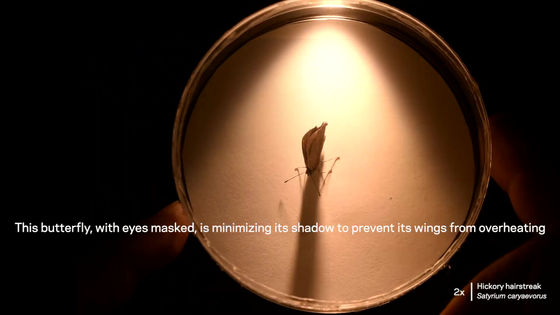
Rotate the petri dish on which the butterfly is riding to change the direction of the butterfly's body.
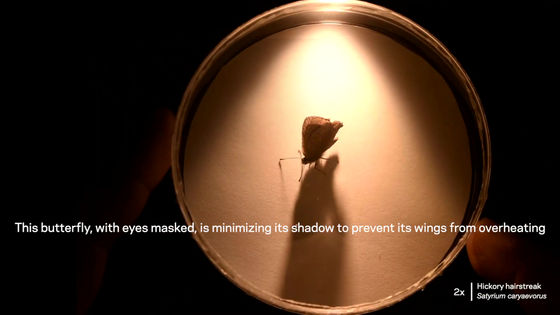
Then, he changed direction immediately and returned to his original direction.
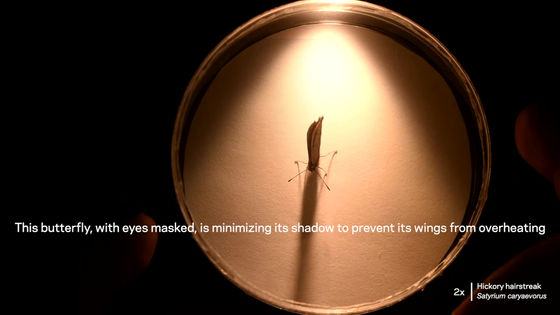
In addition to organs called scent pads, which are thought to be involved not only in sensory organs, but also in the production of pheromones, and wing hearts, which circulate body fluids Organs were also found. The photo below is an enlargement of the 'smell pads' of Parrhasius m-album and Satyrium caryaevorus , members of the Lycaenidae .

Body fluids containing blood cells flow through the olfactory pads on the male butterfly wings.
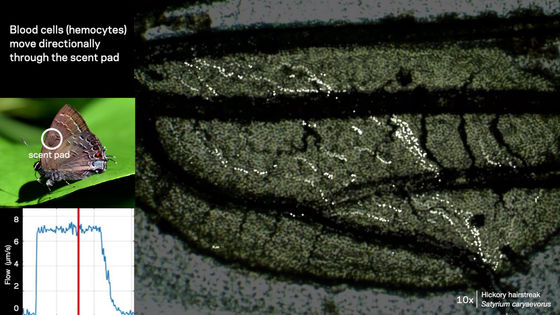
In the vicinity of the olfactory pad, there is a 'wing heart' that expands and contracts like a pump, helping to circulate bodily fluids with dozens of beats per minute.
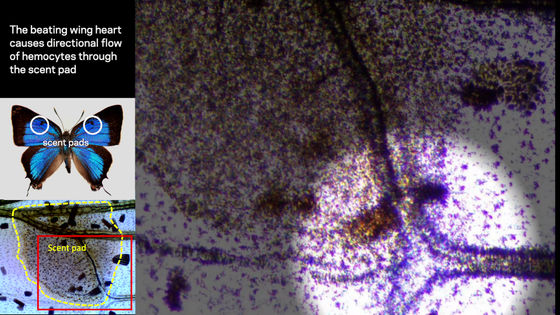
`` This finding shows that butterfly wings need to be redefined as dynamic, living structural organs, not inert membranes, '' said co-author Naomi Pierce. Did.
In addition, since living cells die unless they are at an appropriate temperature, the research group thought that 'butterfly wings should have the function of regulating temperature'. When the temperature distribution of the butterfly wing was examined using an infrared camera, it was confirmed that heat was radiated from the living tissue of the butterfly wing.
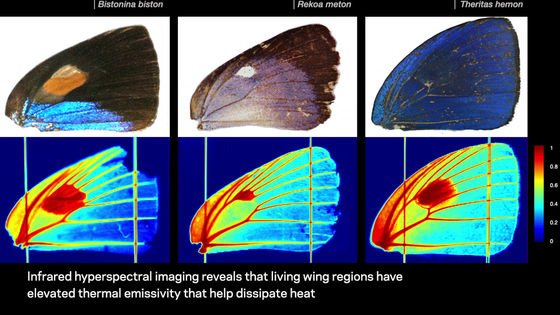
Butterfly feathers have four types of scales, but the fine structure of the scales also contributes to rapid heat dissipation.
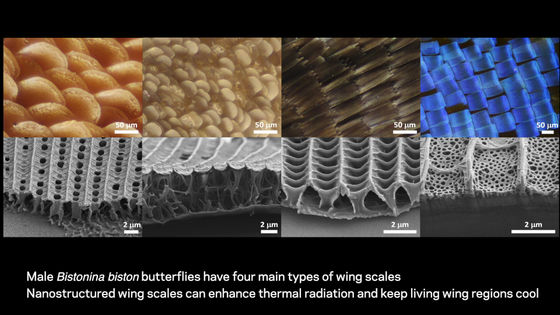
Thanks to the efficient release of heat by such work, the 'living part' of the butterfly wing is always kept at a lower temperature than the 'mere membrane part'.
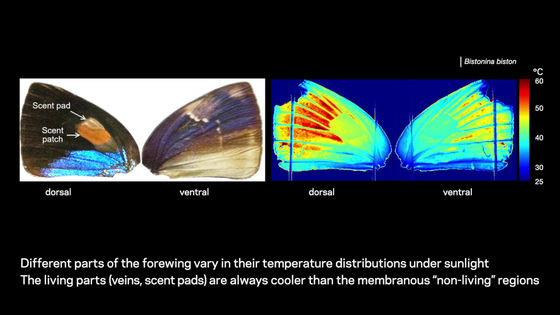
The research group also applied a laser to the butterfly wing and observed it with an infrared camera to see why the butterfly uses the wing to sense the direction of light. When the laser is irradiated from the top of the screen, the butterfly wings heat up more and more.
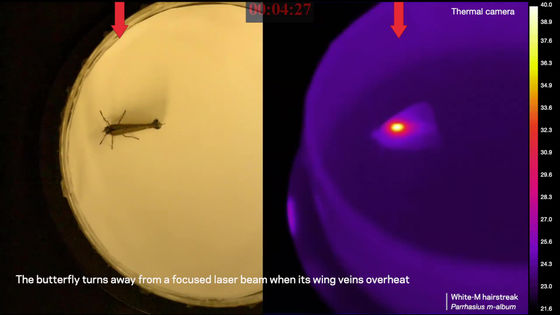
Then, the butterfly turned around and adjusted its direction so that the wings did not overheat.
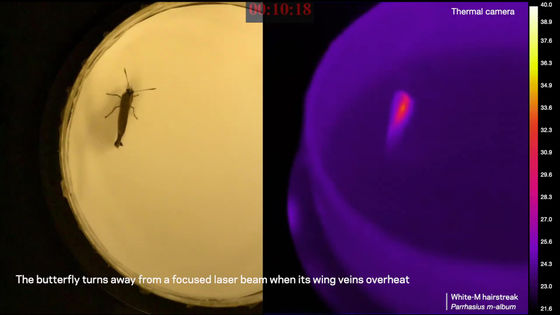
When a laser is applied to a part of the wing while the wing is open ...
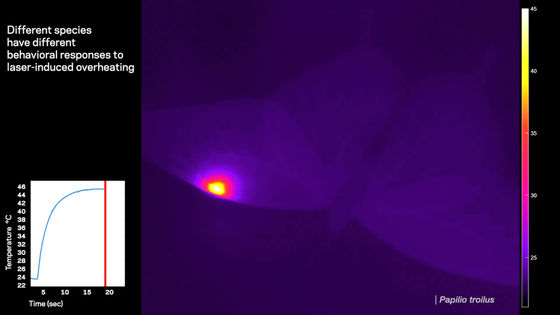
I closed my wings as if it were hot.
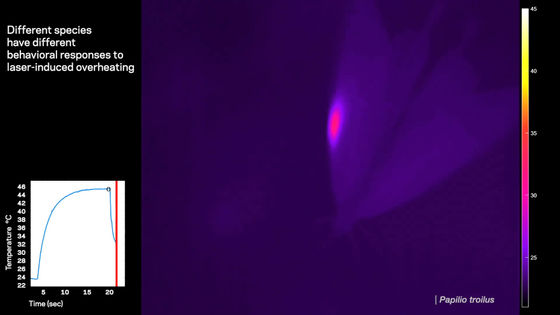
Move only the hotter wings ...
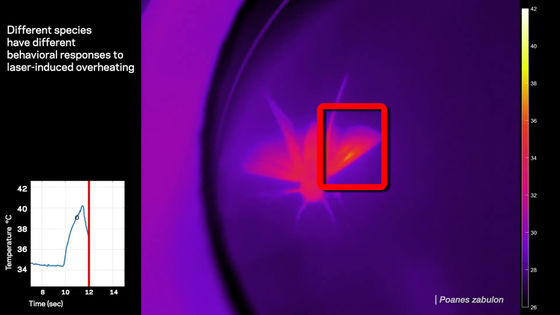
The slight shift of the angle to prevent overheating indicates how accurate the sensory organs are. When the temperature of the wings exceeded about 40 degrees, all the butterflies surveyed showed behavior to prevent overheating of the wings.
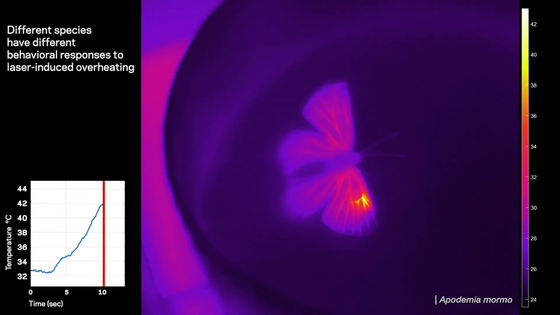
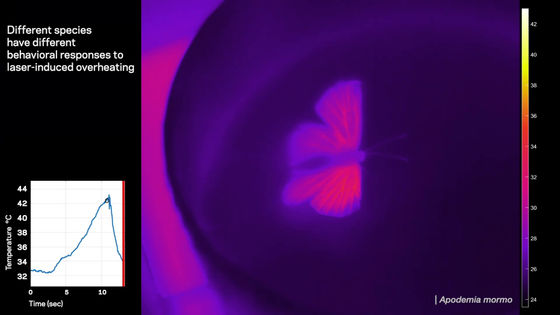
'The nanostructures found in butterfly wing scales provide inspiration for the design of radiating coolant,' said Tsai.
Yu says, 'The myriad sensors on the butterfly wings enable complex flight patterns with real-time feedback. Studying wings may help develop airplane wings that perform well in complex aerodynamic conditions, 'he praised the excellent features of small butterfly wings.
Related Posts:







